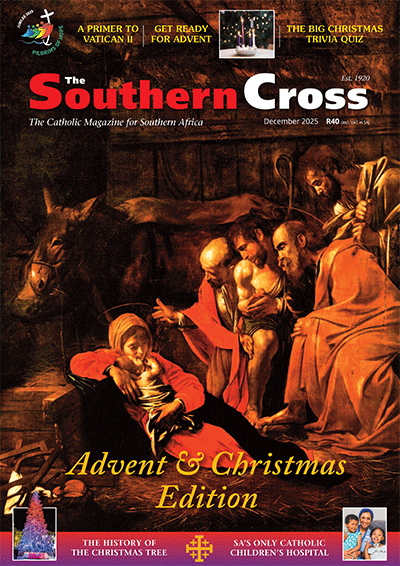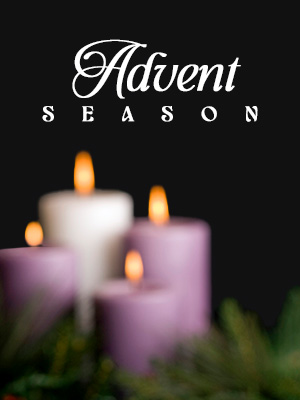Mary and Christian unity
 �Catholics worship Mary, not Jesus,� you hear many Christians say, particularly evangelical and Pentecostals. �No we don�t,� we reply. But then you hear of some of the theologically dubious devotional practices of fellow Catholics and attempts to call Mary �co-redemptorix� and you wonder. At the very least, this confused understanding of Mary remains a serious obstacle to Christian unity. Yet it needn�t be.
�Catholics worship Mary, not Jesus,� you hear many Christians say, particularly evangelical and Pentecostals. �No we don�t,� we reply. But then you hear of some of the theologically dubious devotional practices of fellow Catholics and attempts to call Mary �co-redemptorix� and you wonder. At the very least, this confused understanding of Mary remains a serious obstacle to Christian unity. Yet it needn�t be.

The face of Mary is shown in a detail, side view of “The Virgin of the Immaculate Conception,” a painted and gilded statue attributed to Juan Martinez Montanes.
If it�s any consolation, the Council Fathers at Vatican II were as confused as we are when it came to understanding the role of Mary. A number of them strongly pressed for a specific council decree on Mary, but after due consideration it was decided that she be the subject of a chapter in the Dogmatic Constitution on the Church, Lumen Gentium (1964).
The decision is significant for two reasons. Firstly, she is included in a text like Lumen Gentium which is, as a constitution as opposed to a decree, a central text of the Council. In other words Mary is seen as central to the life of the Church. She has a major role to play in the life of faith. Secondly, and following from this, she is symbolically placed within the Church: she is part of the Church itself.
Crucial to the Council was the function of Mary in God�s plan of salvation. It is her assent to be the mother of the Saviour that makes her stand out as a model of discipleship, as a model of faith in Christ. She is seen as the human being who freely responds positively to the call of God, in contrast to those who reject the call.
She is also the one who accompanies her Son on his mission, more often than not standing in silent solidarity with him � ultimately standing at the foot of the Cross.
The Council affirmed that for Christians there is and can only be one mediator between God and humanity � Christ. Without Christ devotion to Mary is meaningless, pure superstition. However Mary, far from diminishing this unique mediation between God and Christ actually �shows its power�. Her influence on us �flows forth from the superabundance of the merits of Christ, rests on his mediation, depends entirely on it and draws all its power from it. It does not hinder in any way the immediate union of the faithful with Christ but on the contrary fosters it� (LG, 60).
The document emphasises this: �No creature could ever be counted along with the Incarnate Word and Redeemer; but just as the priesthood of Christ is shared in various ways both by his ministers and the faithful, and as the one goodness of God is radiated in different ways among his creatures, so also the unique mediation of the Redeemer does not exclude but rather gives rise to a manifold cooperation which is but a sharing in this one source� (62)
Within the Church, Lumen Gentium says, echoing St Ambrose of Milan, Mary is a type or model of the Church �in the order of faith, charity, and perfect union with Christ� (63). She is the perfect example of what we, the Church, should be in our lives of faith, hope and love. In essence, she is the saint par excellence.
The honouring of Mary in the worship life of the Church is thus to be encouraged, but it should never obscure Christ, particularly since it might prove an obstacle and a scandal to the �separated brethren�, other Christians (67).
As a guideline we are exhorted to remember that �true devotion consists neither in sterile or transitory, affection, nor in a certain vain credulity, but proceeds from true faith� that leads us to see and honour Mary and imitate her.
As a kind of parting shot, the Council notes the respect and honour already shown to Mary by other Christian churches. This needs to be encouraged, as indeed it was after the Council.
Valuable books like Mary in the New Testament (1978) were co-authored by Catholic, Lutheran, Anglican and Reformed scholars. One of the best devotional books on the Rosary, Five for Sorrow, Ten for Joy (1971) was written by J Neville Ward, a Methodist.
Clearly, far from causing division, a proper and theologically sound understanding and devotion to Mary can help foster Christian unity.
Of course, where an unbalanced devotion to Mary persists it simply undoes much of the progress. Apart from that it seems to me that Marian excess that displaces Jesus from the centre of our faith offends the very object of such devotion, Mary herself.
- Saint Paul and the Bible - July 29, 2019
- Religious Orders: Then and Now - November 6, 2018
- A Brief History of Religious Orders in South Africa - October 25, 2018





